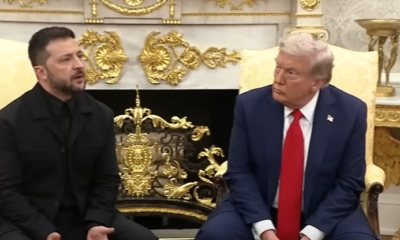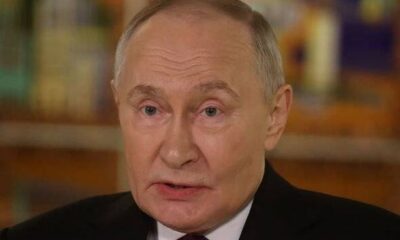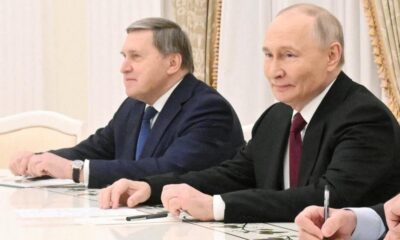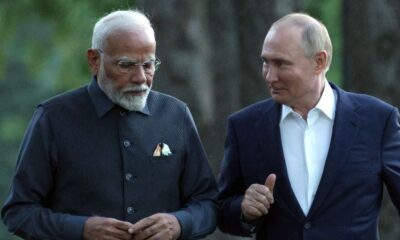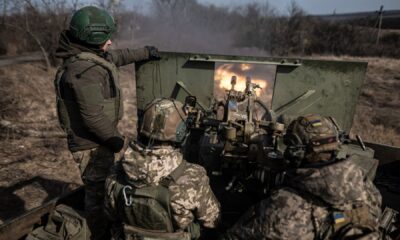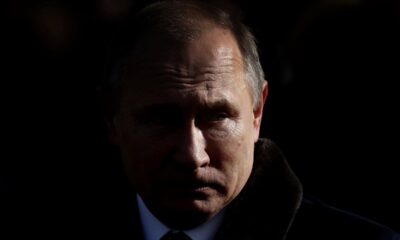World
Russian Soldier Catches and Destroys Ukrainian Drone in Kharkov
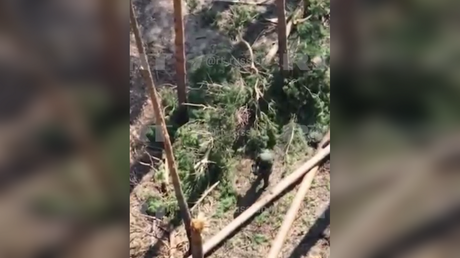
A Russian soldier successfully caught and destroyed a Ukrainian drone in a dramatic encounter that occurred in the Kharkov Region of Ukraine. Footage obtained by RT reveals the moment when the soldier apprehended the unmanned aerial vehicle (UAV) as it approached his position.
The incident unfolded when a Ukrainian FPV (first-person view) drone entered a dugout where the Russian serviceman was taking cover. As the drone slipped into the space, the soldier emerged, grabbing the device mid-air. He then proceeded to strike the drone against a tree multiple times, effectively damaging its rotors and rendering it inoperable. Afterward, the soldier discarded the remnants of the drone into a nearby crater before returning to his post.
In a moment captured on video, the soldier reflected on his actions, stating, “I understand, yes, I could have died, but it’s better for me to die alone than for this drone to kill several of our guys at once.” His words highlight the risks faced by soldiers in the ongoing conflict and their determination to protect their comrades.
Rising Use of FPV Drones in Conflict
The use of FPV drones has surged amid the hostilities between Moscow and Kiev, becoming a vital and cost-effective tool for both Ukrainian and Russian forces. These drones are employed for various purposes, including targeting military installations, armored vehicles, and entrenched positions, as well as identifying individual soldiers.
In recent months, both sides have deployed fiber optics-guided FPV drones, which provide a more secure alternative to conventional radio-controlled models. These advanced drones are less susceptible to electronic interference and offer significantly increased operational ranges.
As the conflict continues, the role of UAVs in warfare is likely to expand, making incidents like that of the Russian soldier a notable example of the evolving tactics on the battlefield. The quick thinking and bravery demonstrated in this encounter underscore the intense and unpredictable nature of modern combat.
The ongoing war in Ukraine remains a focal point of international concern, with both sides continually adapting to the challenges posed by new technologies in warfare. The effectiveness and strategic value of FPV drones are reshaping how military operations are conducted in the region, influencing both tactics and outcomes.
-

 World15 hours ago
World15 hours agoCoronation Street’s Shocking Murder Twist Reveals Family Secrets
-

 Entertainment4 months ago
Entertainment4 months agoKate Garraway Sells £2 Million Home Amid Financial Struggles
-

 Entertainment3 months ago
Entertainment3 months agoAnn Ming Reflects on ITV’s ‘I Fought the Law’ Drama
-

 Health3 months ago
Health3 months agoKatie Price Faces New Health Concerns After Cancer Symptoms Resurface
-

 Entertainment3 weeks ago
Entertainment3 weeks agoCoronation Street Fans React as Todd Faces Heartbreaking Choice
-

 Entertainment3 months ago
Entertainment3 months agoCoronation Street’s Carl Webster Faces Trouble with New Affairs
-

 World4 days ago
World4 days agoKevin Sinfield Exceeds Fundraising Goal Ahead of Final Marathons
-

 Entertainment4 days ago
Entertainment4 days agoTwo Stars Evicted from I’m A Celebrity Just Days Before Finale
-

 World3 weeks ago
World3 weeks agoBailey Announces Heartbreaking Split from Rebecca After Reunion
-

 Entertainment3 months ago
Entertainment3 months agoWhere is Tinder Swindler Simon Leviev? Latest Updates Revealed
-

 Entertainment4 months ago
Entertainment4 months agoMarkiplier Addresses AI Controversy During Livestream Response
-

 Science2 months ago
Science2 months agoBrian Cox Addresses Claims of Alien Probe in 3I/ATLAS Discovery

